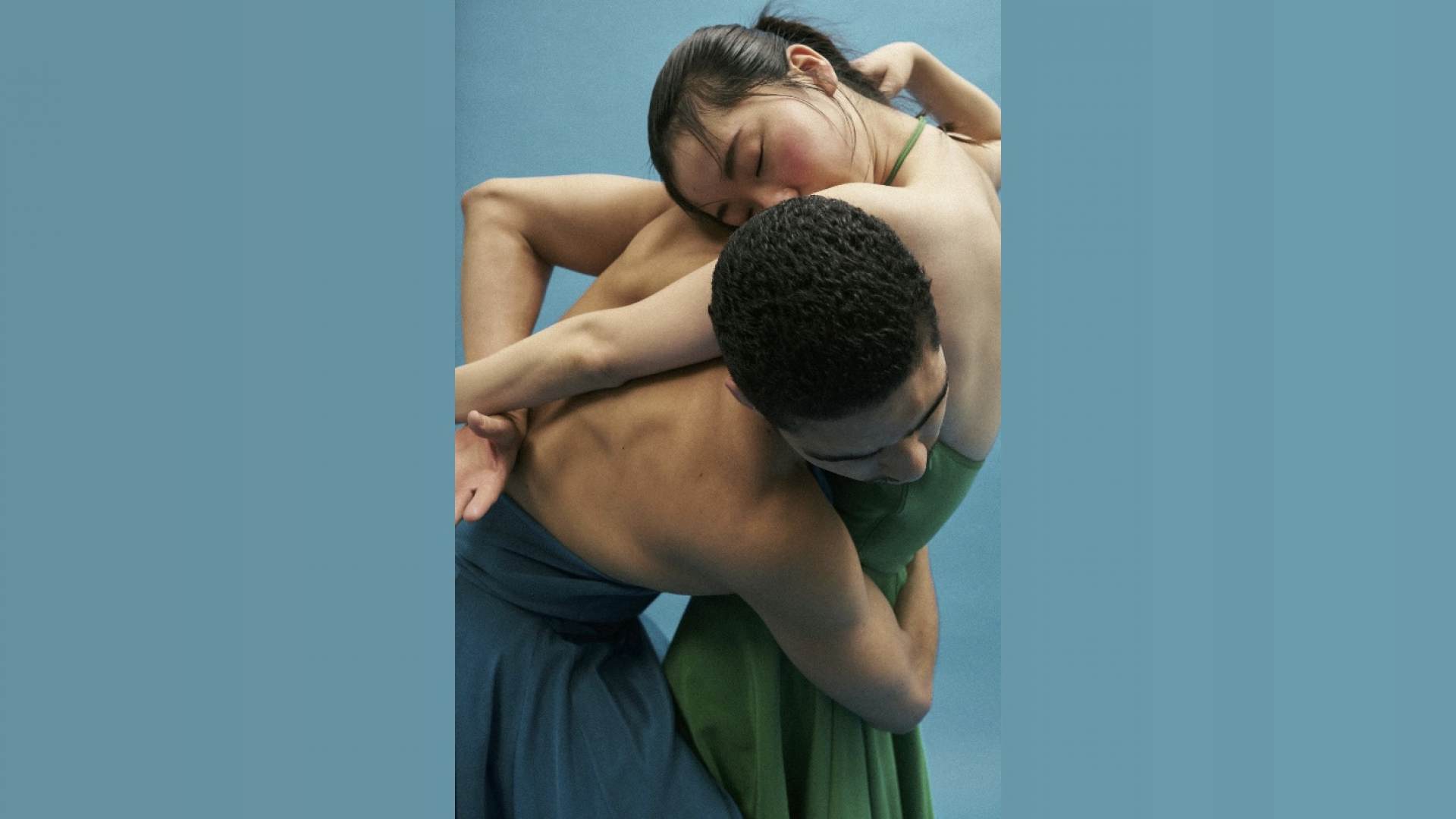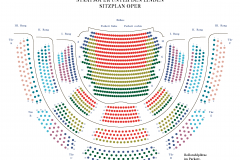Gods and Dogs
Mo | Tu | We | Th | Fr | Sa | Su |
Gods and Dogs / Angels' Atlas
The confrontation of the individual with reality and their attempts to overcome or avoid difficulties are key themes in Jiří Kylián's work. Gods and Dogs (2008) explores this thought process by reflecting on the way we dress and the underlying motives that lead us to prefer one garment over another: «We spend our whole lives wearing clothes like masks and changing and altering them depending on the circumstances and how others see us.» Jiří Kylián shares the fascination he feels for the behavior of the individual through dance, staging the human attempt to find their place in a society that is difficult to describe clearly. Canadian dancer Crystal Pite was a member of the Ballet British Columbia and the Frankfurt Ballet under the direction of William Forsythe. She made her debut as a choreographer in 1990 with the Ballet BC. Since then, she has developed more than fifty dance pieces for the Ballet de l’Opéra de Paris, the Royal Ballet, the Nederlands Dans Theater, the Cullberg Ballet and Ballet Frankfurt, among others. Her exhilarating, unconventional work has won numerous international awards. Angels’ Atlas was created by Crystal Pite for the National Ballet of Canada in 2020. It unfolds n front of a constantly changing light installation – a vast, unrecognisable landscape of light and matter. Against this fantastical backdrop, dancing bodies become a sign of human transience as well as vitality.
Program and cast
Choreography: Crystal Pite
Music: Owen Belton
Additional Music: Peter I. Tschaikowsky, Morten Lauridsen
Reflective Light Backdrop Concept: Jay Gower Taylor
Reflective Light Backdrop Design: Jay Gower Taylor, Tom Visser
Set Design: Jay Gower Taylor
Lighting Design: Tom Visser
Costumes: Nancy Bryant
Choreographische Assistenz Und Einstudierung: Spencer Dickhaus
Choreography: Jiří Kylián
Music: Dirk Haubrich, Jiří Kylián, Ludwig Van Beethoven
Lighting Design: Kees Tjebbes
Computergesteuerte Projektion: Daniel Bisig, Tatsuo Unemi
Videoprojektion: Dag Johan Haugerud, Cecilie Semec
Costumes: Joke Visser
Set Design: Jiří Kylián
Choreography: Crystal Pite
Music: Owen Belton
Additional Music: Peter I. Tschaikowsky, Morten Lauridsen
Reflective Light Backdrop Concept: Jay Gower Taylor
Reflective Light Backdrop Design: Jay Gower Taylor, Tom Visser
Set Design: Jay Gower Taylor
Lighting Design: Tom Visser
Costumes: Nancy Bryant
State Opera Unter den Linden
Staatsoper Unter den Linden is one of Berlin's most prestigious opera houses, with a rich history and significant cultural impact.
History:
The Staatsoper Unter den Linden was originally built between 1741 and 1743, under the direction of architect Georg Wenzeslaus von Knobelsdorff. It was commissioned by Frederick II of Prussia and was initially named the Königliche Oper (Royal Opera). The opera house has undergone several renovations and reconstructions, notably after World War II damage. It reopened in 1984, following a major renovation.
Construction:
The original design was characterized by its Baroque style, featuring an elegant façade and a grand entrance. The building was reconstructed in the 1950s and 1980s, maintaining its classical exterior while modernizing the interior. The façade features a classic portico with six Corinthian columns and a prominent central pediment.
Interior:
The interior is known for its opulent and classical design. The auditorium is renowned for its acoustics and grandeur, with luxurious velvet seats and elaborate decorations. The stage and seating areas have been updated to meet modern performance standards while preserving historical aesthetics.
Concerts and Performances:
The Staatsoper Unter den Linden hosts a variety of performances, including operas, orchestral concerts, and ballet. It is home to the Staatskapelle Berlin, one of Germany's leading orchestras. The opera house is celebrated for its high-quality productions and its role in Berlin’s vibrant cultural scene.
JOURNEY
The Staatsoper Unter den Linden has completely barrier-free access due to its excellent public transport connections.
ADDRESS: Unter den Linden 7; 10117 Berlin
SUBURBAN RAILWAY
S+U Friedrichstraße (S1, S2, S5, S7, S25, S75)
SUBWAY
Hausvogteiplatz (U2)
Museumsinsel (U5)
Stadtmitte (U2, U6)
Unter den Linden (U5, U6)
BUS
Staatsoper (100, 245, 300)
Unter den Linden/Friedrichstraße (100, 147, 245, 300, N6)
PARKING
Q-PARK parking garage Unter den Linden/Staatsoper
Bebelplatz, 10117 Berlin
There are five electric charging stations in the parking garage. Further information can be found here.
The underground car park on Bebelplatz offers disabled parking spaces and direct access to the opera house. On entering the car park between 5.30pm and 11.30pm, the maximum parking fee is €7. To use this tariff, enter your parking ticket in one of the pay machines and the message »Theatertarif« will appear on the display. Please note that it is not possible to use the tariff if you enter the car park before 5.30pm. so it will not be shown on the display. TIP: If you pay the theatre tariff at the pay machine before the event, you can avoid unnecessary waiting after the show.

 EN
EN DE
DE IT
IT FR
FR ES
ES RU
RU JP
JP RO
RO
 Seating plan
Seating plan 